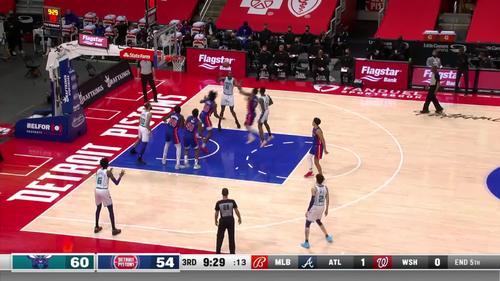本文目录:
|

印度国旗的介绍
最佳答案:
印度国旗呈长方形,长与宽之比为3∶2。旗面由橙、白、绿三个相等的横长方形组成,旗面中心有一个含24根轴条的蓝色法轮。
橙色:象征了勇气和牺牲精神,它代表着印度人民在争取独立和自由的过程中所表现出的英勇无畏的品质,以及为了国家和民族利益不惜牺牲的精神。
白色:寓意着纯洁和真理,体现了印度人民对公正、诚实和道德的追求,也代表着印度在宗教、文化等方面追求的纯净和高尚的境界。
绿色:象征着繁荣和生机,它反映了印度丰富的自然资源和农业传统,也表达了印度人民对美好生活的向往和对未来的希望。
蓝色法轮:是印度孔雀王朝阿育王时代佛教圣地石柱柱头的狮首图案之一,被称为“阿育王法轮”。法轮的24根轴条代表着一天的24小时和一年的24个节气,象征着进步和永恒的运动。整个国旗鲜明地体现了印度人民的历史、文化、宗教信仰以及对国家的期望和追求。
印度国旗含义
橙色象征勇敢献身精神,白色象征纯洁和真理,绿色表示生命.中央24根轴条组成的法轮,代表神圣真理和进步.我在世界知识地图上看到的
印度国旗含义
橙色象征勇敢和自我牺牲精神,也是教士法衣的颜色,舍身为国的英雄们的颜色;白色象征纯洁的真理;绿色表示信心,代表人类生命所依存的生产力。法轮是印度孔雀王朝阿育王时代佛教圣地石柱柱头的狮首图案之一,对于印度人而言,它是神圣之轮、真理之轮、向着进步转动之轮,永远轮回苍穹之轮。印度国旗含义
橙色象征勇敢和自我牺牲精神,也是教士法衣的颜色,舍身为国的英雄们的颜色;白色象征纯洁的真理;绿色表示信心,代表人类生命所依存的生产力。法轮是印度孔雀王朝阿育王时代佛教圣地石柱柱头的狮首图案之一,对于印度人而言,它是神圣之轮、真理之轮、向着进步转动之轮,永远轮回苍穹之轮。这个是在网上找的.希望可以帮到你..
印度的国旗国徽有什么特点?
中央24根轴条组成的法轮,代表神圣、真理和进步参考资料:www.esou114.cn/biaozhi/html/55/126.html
介绍印度国旗的英文小短文
The National Flag of India, also called the Tiranga, was adopted during an ad hoc meeting of the Constituent Assembly of the country. The meeting was held on the 22nd July 1947, twenty-four days prior to Indias independence from the British (which took place on 15th August 1947). Based on the flag of the Indian National Congress, which was designed by Pingali Venkayya, the flag is also the war flag Indian Army, hoisted daily on military installations. The heraldic description of Indian National Flag is Party per fess Saffron and Vert on a fess Argent a "Chakra" Azure.Design
National Flag of India has been designed in such a way that it forms a horizontal tricolor, with the colors - saffron, white and green, in equal proportions. The deep saffron (kesari) color is at the top; white is in the middle, while dark green forms the bottom. The ratio of the width of the flag to its length is 2:3. In the centre of the white band of the flag is a navy blue wheel, comprising of 24 spokes, which represents the Ashoka Chakra, seen on the abacus of the Sarnath Lion Capital of Ashoka. The diameter of the chakra approximates to three-fourth of the width of the white band of the flag.
Significance
The preamble of the flag code of India describes the significance of the colors and the chakra in the Tiranga. It was amply described by Dr. S. Radhakrishnan in the Constituent Assembly that unanimously adopted the National Flag. Dr. S. Radhakrishnan explained:
“Bhagwa or the saffron colour denotes renunciation of disinterestedness. Our leaders must be indifferent to material gains and dedicate themselves to their work. The white in the centre is light, the path of truth to guide our conduct. The green shows our relation to soil, our relation to the plant life here on which all other life depends. The Ashoka Wheel in the center of the white is the wheel of the law of dharma. Truth or satya, dharma or virtue ought to be the controlling principles of those who work under this flag. Again, the wheel denotes motion. There is death in stagnation. There is life in movement. India should no more resist change, it must move and go forward. The wheel represents the dynamism of a peaceful change.”
Flag Code
After 52 years, the citizens of India are free to fly the Indian National Flag over their homes, offices and factories on any day. On 26th January 2002, the flag code was changed, giving Indians the freedom to proudly display the national flag any where and any time. However, there are still some rules and regulations upon how to fly the flag, based on the 26th January 2002 legislation, which should be followed by the citizens. These rules and regulation includes certain dos and donts, which have been explained below.
Dos
The National Flag may be hoisted in educational institutions (schools, colleges, sports camps, scout camps, etc.) to inspire respect for the Flag. An oath of allegiance has been included in the flag hoisting in schools.
A member of public, a private organization or an educational institution may hoist/display the National Flag on all days and occasions, ceremonial or otherwise, consistent with the dignity and honor of the National Flag.
Section 2 of the new code accepts the right of all private citizens to fly the flag on their premises.
Donts
The flag cannot be used for communal gains, drapery, or clothes. As far as possible, it should be flown from sunrise to sunset, irrespective of the weather.
The flag cannot be intentionally allowed to touch the ground or the floor or trail in water. It cannot be draped over the hood, top, and sides or back of vehicles, trains, boats or aircraft.
No other flag or bunting can be placed higher than the flag. Also, no object, including flowers or garlands or emblems, can be placed on or above the flag. The tricolor cannot be used as a festoon, rosette or bunting.









